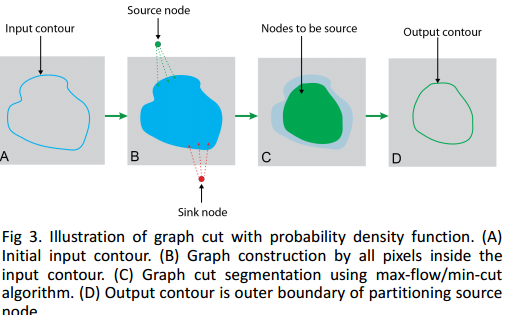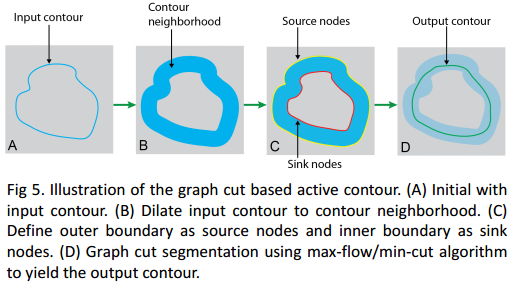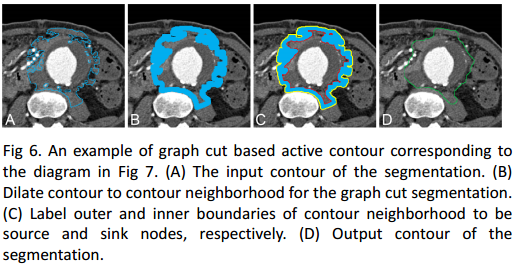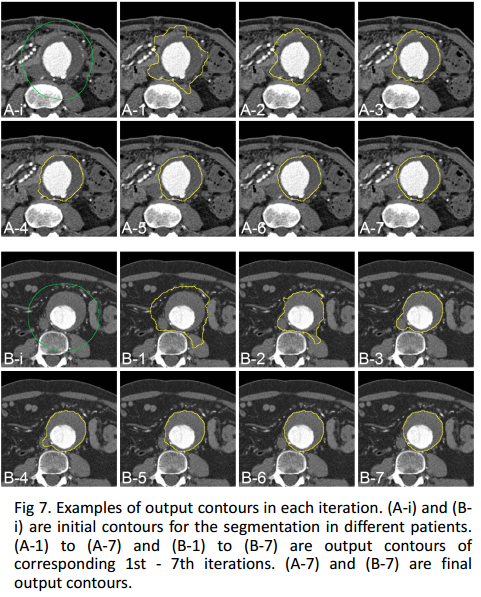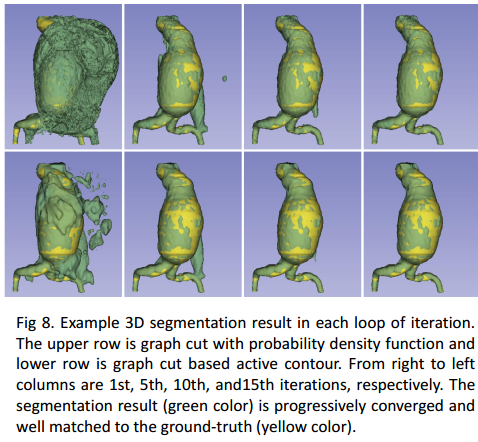Segmentation of Abdominal Aortic Aneurysm by Variable Neighborhood Search through Intensity and Gradient spaces |
||||
| Thanongchai Siriapisith a,b, Worapan Kusakunniran a, Peter Haddawy a a Faculty of Information and Communication Technology, Mahidol University, Bangkok, Thailand. b Department of Radiology, Faculty of Medicine Siriraj Hospital, Mahidol University, Bangkok, Thailand. |
||||
Introduction |
||||
| Abdominal aortic aneurysm (AAA) is an abnormal dilatation of the abdominal aorta, which can cause rupture leading to death. Abdominal aortic aneurysm segmentation has an important role for predicting rupture risk and pre-operative planning of endovascular repair. The anatomical structure of aorta is composed of inner, outer walls and thrombus between them. This study proposes AAA segmentation using concept of variable neighborhood search [1] by iteratively combining two different segmentation techniques under two different searching spaces of voxel intensity and voxel gradient. The output of each method is used as the initial contour to the other method in each iteration. Alternating between search spaces can overcome the problem of local optima since a local optimal segmentation in intensity space is not necessarily a local optimal segmentation in gradient space, and vice versa. Segmentation of the outer wall of AAA is particularly challenging because the thrombus inside aneurysm has high degree of voxel similarity to surrounding soft tissue (Fig1). | ||||
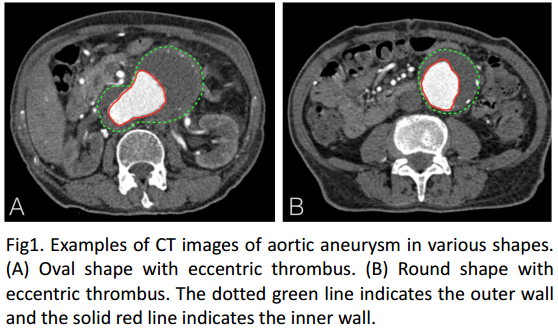 |
||||
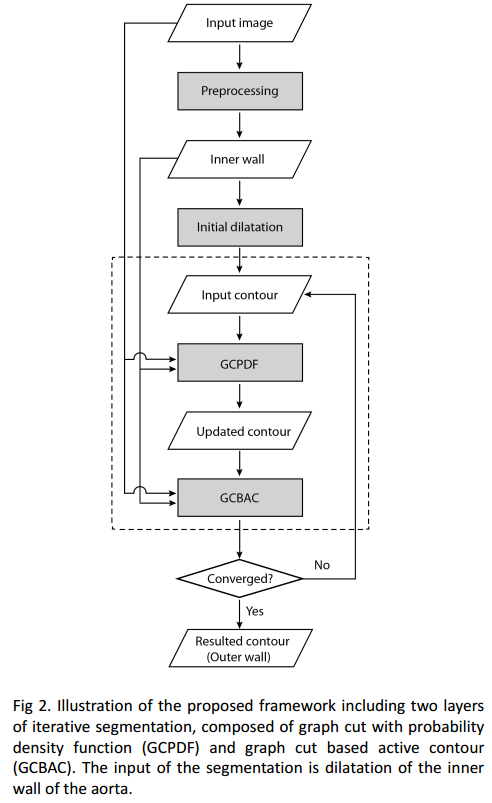 |
||||
Proposed Method |
||||
| The objective of proposed segmentation algorithm is to solve the difficult problem in AAA segmentation. The inner lumen object is used as starting point of segmentation algorithm (Fig 2). The initial contour is dilatation of inner lumen to cover entire the outer wall of AAA. Iterative combination of graph cut based active contour (GCBAC) and graph cut with probability density function (GCPDF) segmentations were performed. The GCPDF is intensity-based segmentation based on probability density function and classic graph cut or Grabcut [3]. The GCBAC is gradient-based technique, which detects the boundary of an object depending on the gradient difference of the adjacent voxels [2]. In each iteration, GCPDF is used to partition the image using pixel intensity (Fig 3, 4) and GCBAC is then used to find the closest boundary in the closed space from the initial contour using pixel gradient (Fig 5, 6). | ||||
|
||||
Experimental Result |
||||
| This combination enables segmentation of the outer wall of AAA with high accuracy. Comparison with gold standard, the proposed segmentation result shows that the average disc similarity coefficient (DSC), jaccard similarity coefficient (JSC) and volume difference (VD) of easy cases are 93.62±1.55%, 88.04±2.69% and 6.16±4.26, respectively. For difficult cases, the average DSC, JSC and VD are 90.13±2.94%, 82.15±4.84 and 12.33±6.89%, respectively as shown in Fig 7, 8. Comparison between 2D and 3D version of proposed method shows that 3D version is slightly higher accuracy (91.88% versus 87.57%). | ||||
|
||||
References |
||||
| [1] Hansen P, Mladenović N, Moreno Pérez JA. Variable neighbourhood search: methods and applications. Annals of Operations Research. 2010;175(1):367- 407. [2] Xu N, Ahuja N, Bansal R. Object segmentation using graph cuts based active contours. Computer Vision and Image Understanding. 2007;107(3):210-24. [3] Rother C, Kolmogorov V, Blake A, editors. "GrabCut" - Interactive foreground extraction using iterated graph cuts. ACM Transactions on Graphics; 2004 |

